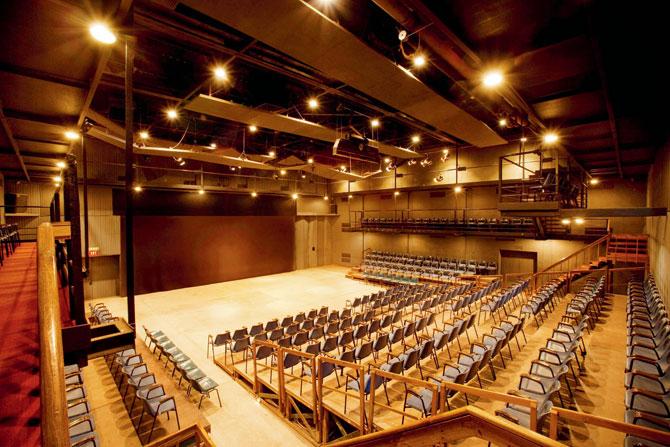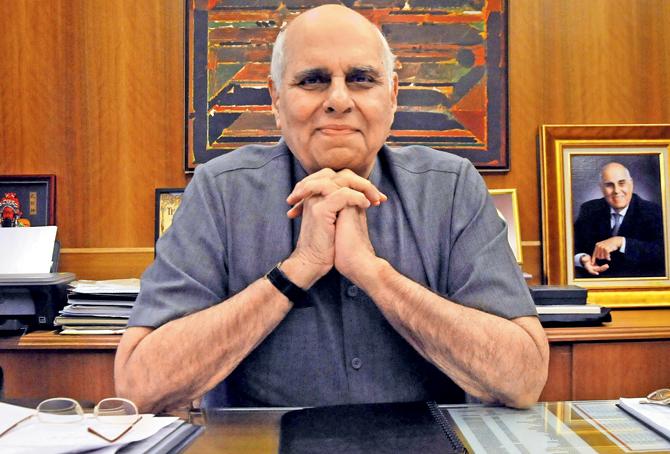English acoustician on board to find novel ways to improve sound quality across Jamshed Bhabha, Tata and Experimental Theatres

Jamshed Bhabha Auditorium
On April 30, as Louiz Banks, Ustad Zakir Hussain, Sanjay Divecha and other acclaimed musicians take the stage at Tata Theatre to celebrate International Jazz Day, it will be the last big concert to be held at the iconic venue at the National Centre for the Performing Arts before it closes down.
It will, however, reopen in June. For the 1,010-seater theatre, which was inaugurated by the then Prime Minister Indira Gandhi in 1980, is all set for version 2.0, as is every other venue at the cultural haven that kisses the Arabian Sea from the southern tip of Marine Drive.
"For many years, we have been wanting to upgrade the theatres. Because obviously, something that was built in the 1980s and '90s needs looking at," says NCPA chairman Khushroo N Suntook, as he shares details about the plans for the overhaul of the centre, which is in its golden jubilee year.
 The Experimental Theatre opened in 1986
The Experimental Theatre opened in 1986
But much of it, as he calls it, is "invisible work, which is behind the curtains, in the machines backstage." The sound system and acoustics are a huge part of the it, and for that, they have got renowned English acoustician Richard Nowell - whom Suntook discovered while listening to a concert at Trafalgar Square - on board.
Also Read: A gateway to language at this festival at NCPA
At the Jamshed Bhabha Theatre (JBT), which is already shut for renovation, "the acoustic orchestral shell has been strengthened and a permanent new black wall created, dramatically improving the acoustic performance of the space. Carefully selected wood has been used to reline the auditorium steps," writes Nowell in the technical development section of the yet-to-be-released in-house magazine on the history, evolution and way forward for the NCPA. Along with JBT, the Tata Theatre (TT), too, will receive the Meyer sound systems brought down from the US, while the Godrej Dance Theatre, and Experimental (ET) and Little Theatres have already been fitted with new sound equipment.

Khushroo Suntook
Acoustics, in the eyes of Suntook, is an art. "The wall plaster, the paint, the seats you use, and even the clothes the audience members wear, all impact the absorption and reflection of sound," he explains. And for this reason, the material that the seats are made of is being replaced with a more modern variant that reflects more sound. "Then, of course, there is the eternal argument of carpet or no carpet. The musicians don't want it; the crowd wants the lush feel of the red carpet. So, we are in the process of rethinking and experimenting," he adds.
One of the most expensive exercises has been replacing the 20- and 30-year-old air conditioning systems at JBT and TT. "The aim is to have quieter ACs. Also, the draught often has the audience sneezing and coughing through the show. We are taking care of this," says Suntook.
An innovation that he is pleased with is a new fire curtain at JBT, which apart from upgrading the safety of the space, has also enabled the creation of a new 300-seat performance area, right on the stage of the massive theatre.
Also Read: Open air concerts makes a secret entry into NCPA
The stagecraft machinery, too, has been brought up to date. The JBT, for instance, has a new electrical bar and two more scenery bars so the scenes can be moved up and down automatically. A new rigging system for the ET has been ordered, which, writes Nowell, "will provide directors with a great deal more flexibility, along with a measurable reduction in rigging times, and thus, costs."
This particular development is also in conjunction with the NCPA's focus on expanding its in-house theatre programme, which also involves a collaboration with National Theatre, London. Another part of the plan is to expand the programme for the Symphony Orchestra of India (SOI), which was founded by Suntook. "Right now, we only have two seasons in a year. But we hope to have a full season," he says, adding that another development to look out for is the way the children's orchestra, being trained under the expertise of Marat Bisengaliev, is shaping up. A key focus area, starting this year, will also be to create a second innings of sorts for retired musicians by absorbing them at the centre.
But a cultural centre is as good as its audience. And for that, Zane Dalal, associate music director of the SOI, and other experts will conduct lectures, demonstrations and talks to help people better appreciate music and other 1,000 plus performances that take place at the NCPA round the year. "We are all for spreading culture," Suntook concludes.
Also Read: Panel discussion at NCPA focuses on need for people like Jamshed, Homi Bhabha
Catch up on all the latest Mumbai news, crime news, current affairs, and also a complete guide on Mumbai from food to things to do and events across the city here. Also download the new mid-day Android and iOS apps to get latest updates
 Subscribe today by clicking the link and stay updated with the latest news!" Click here!
Subscribe today by clicking the link and stay updated with the latest news!" Click here!







